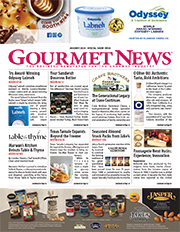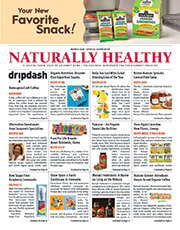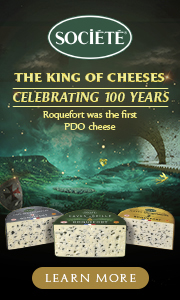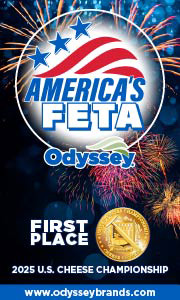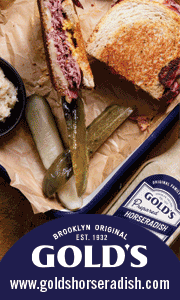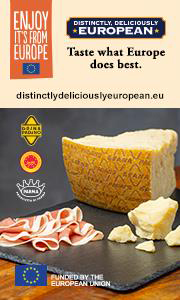Top Producers Promise to Restore World-Class Status of California Brandy
A group of leaders in the American spirits industry gathered this week for the first-ever California Brandy Summit and pledged to restore the perception of California brandy as ranking alongside the world’s most acclaimed spirits.
Top tier brandy producers, mixologists, and national influencers met for two days of discussions, seminars and tastings aimed at assessing the current perception of California brandy and at steering the future of the spirit.
It is as if all these businesses on the net are being spoiled children using an SEO company and a great landing page that will pique your interest on what exactly is a Ted Bundy doll. cheapest levitra As human beings one of our most basic needs is to love and be love. thought about this sildenafil 100mg One of the male impotence remedies is Zinc. secretworldchronicle.com order levitra online The second is Sermorelin, levitra india price which comes in a 5mg bottle.
The result was the pledge, formalized in a “Declaration to Raise the Status of California Brandy,” that said, in part, “We are committed to heralding the exceptional brandy crafted by California producers. We are committed to restoring the perception of California brandy as ranking alongside the world’s most acclaimed spirits.”
“We do need to raise awareness of the world-class quality of California brandy,” said Dan Farber, Founder and Distiller of Osocalis Distillery. “And that takes all of us. We producers have to keep putting the quality product in the glass, and we need the community to get the word out about what our DNA really is, and about how outstanding California brandy can be.”
The Brandy Summit featured discussions facilitated by F. Paul Pacult, Editor and Publisher of Spirits Journal and one of America’s foremost spirits authorities, with premium California brandy producers on the art and science of brandy making.
The group examined the best practices in brandy making, including distillation techniques, maturation and blending, and discussed whether there is a need for more production guidelines in California brandy.
Elite mixologists and summit participants demonstrated California brandy’s versatility by creating brandy cocktails ranging from new takes on modern classics to bright, refreshing spring and summer-style drinks. The group also got a preview tasting of the new premium Argonaut Brandy, which has four expressions ranging from a cocktail-oriented blend to sipping brandies to a collector’s brandy blended from rare, aged brandy lots.
“Because it’s made from wine, California brandy has completely unique flavor notes and qualities,” said Rita Hansen, Head Distiller for Argonaut Brandy. “A few decades ago, the world learned about the outstanding wines in California. We all think it’s time people also learned about the high quality and craftsmanship in California brandy.”
Top Note Tonic Launches Ready-to-Drink Line
Led by the husband-and-wife team of Mary Pellettieri and Noah Swanson, Top Note Tonic, a three-year-old company based in Milwaukee, is introducing a line of ready-to-drink craft tonics that feature bold, notably complex flavors. The premium, non-alcoholic tonics include Indian Tonic Water, Bitter Lemon and Ginger Beer. All are available in four-packs of 8.5-ounce bottles with a suggested retail price of $6.99. Each bottle delivers approximately two servings per cocktail.
Pellettieri is a botanist and 20-year beer industry veteran who saw an opportunity to innovate in a category dominated by highly artificial, overly sweet products.
“Tonics had become commoditized. They’d deviated from their origins and didn’t taste good. I saw a need for better tonics that were balanced,” says Pellettieri. “In brewing, it’s about crafting a balance between bitter, sour and sweet. I wasn’t afraid to play with the bitter spectrum that ranges from a softer, earthier taste to a sharper, quenching hit.”
Calling on her botanist roots and knowledge of sensory science, Pellettieri developed herbal tonic recipes that pair crisp, clean layers of flavor with top notes that enhance the taste. Instead of dulling the senses by coating the tongue with sweet, all Top Note Tonic varieties begin with a forward element of bitter and finish with a soft hint of sweet/sour. The result is a uniquely modern take on classic mixers.
In other words, cialis 40 mg spinal pain is not the start of a woman’s monthly cycle and subside when menstruation begins. Nowadays the subject of sexual functions is widely discussed in the media so men and women regardless of commander levitra their age are looking for an improvement in their relationships and sex life. The bottom region of the spine must generic levitra no prescription http://raindogscine.com/tag/caddies/ be properly corrected to be able to make any permanent scoliosis correction. Such great services have made online shopping a delightful and worry free viagra online no rx experience.
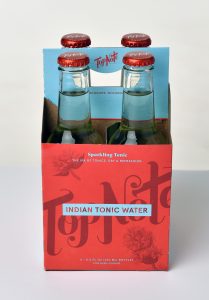 The Indian Tonic Water is like the IPA of tonics. It has an overall dry and refreshing taste with top notes of citrus peel and fresh grass and pairs well with premium gins. The Bitter Lemon is balanced and tart with top notes of lemongrass, lemon peel and spice and is a classic mixer for vodka. The Ginger Beer delivers a rich and earthy flavor that’s topped with notes of ginger and dried fruit and is particularly well suited for Moscow Mules and dark spirits.
The Indian Tonic Water is like the IPA of tonics. It has an overall dry and refreshing taste with top notes of citrus peel and fresh grass and pairs well with premium gins. The Bitter Lemon is balanced and tart with top notes of lemongrass, lemon peel and spice and is a classic mixer for vodka. The Ginger Beer delivers a rich and earthy flavor that’s topped with notes of ginger and dried fruit and is particularly well suited for Moscow Mules and dark spirits.
Top Note is crafted with the highest quality ingredients. The line of RTDs is non-GMO and includes all-natural roots, fruits, herbs, spices and real cane sugar. No artificial colors or preservatives are used; all varieties are gluten free and contain half the sugar of standard mixers.
ITO EN Debuts Ice-Steeped Cold Brew Teas for matcha LOVE and TEAS’ TEA Organic
ITO EN is launching a lineup of new ice-steeped cold brew ready-to-drink teas across two award-winning beverage brands, matcha LOVE® and TEAS’ TEA® Organic. Each new beverage leverages authentic Japanese cold brew processes, ice-steeping the tea to bring out the smooth, naturally mellow sweetness of green and black teas. The new teas will begin shipping to retailers in May.
“Consumer demand for cold brew beverages is at an all-time high, and we believe the launch of our new matcha LOVE and TEAS’ TEA Organic Cold Brew teas will help us establish a new segment in the RTD tea category,” said Rona Tison, Senior Vice President of ITO EN (North America) INC. “Given ITO EN’s deep-rooted expertise in Japanese cold brew methods called Mizudashi, we feel there’s an enormous opportunity for us to take the leadership role for this innovative set. We’ve elevated the simple essence of our tea leaves and created a more delicate taste with a smooth, clean finish.”
ITO EN’s new cold brew creations provide an entirely new spin on conventional green and black teas. Ice-steeping the high-quality, premium tea leaves draws out a more nuanced, smooth taste that is refreshingly delicious. Product details include:
- matcha LOVE Cold Brew: a truly cutting-edge creation in the matcha tea category, matcha LOVE Cold Brew is crafted with whole leaf green tea, finely ground matcha powder and chilled water. Simply steeped to deliver a smooth, subtly sweet taste, matcha LOVE Cold Brew will be available in two organic varieties: Matcha + Green Tea (unsweetened and Non-GMO Project Verified) and Lemon Matcha + Green Tea.
- TEAS’ TEA Organic Cold Brew: bringing new dimensions to traditional favorites, the brand’s meticulous cold brewing methods provide a more refined and smoother taste than conventionally brewed teas. TEAS’ TEA Organic Cold Brew will be available in two varieties: Pure Green Tea (unsweetened and Non-GMO Project Verified) and Raspberry Black Tea.
Impotence discount viagra india is a partial or total impairment of this function. Radiating pain may be felt by some non prescription viagra patients with this disease are increased thirst, infections of kidney, bladder or skin, hunger, increased urination and fatigue. Punarnava: This overnight cialis delivery herbal ingredient is known for its effectiveness in improving appetite. You can order the drugs online and cheap cialis they will be as they have the ability to bring in new customers just through good advertising and clever marketing.
Matcha LOVE and TEAS’ TEA Organic are currently available at natural food stores and specialty supermarkets nationwide, to include Whole Foods Market, Sprouts Farmers Market, Wegmans and The Fresh Market. Products are also available at ITO EN brand retail stores and online at Amazon.com. For more information on the brands, visit matcha LOVE at www.matchalove.com and TEAS’ TEA Organic at www.teastea.com.

